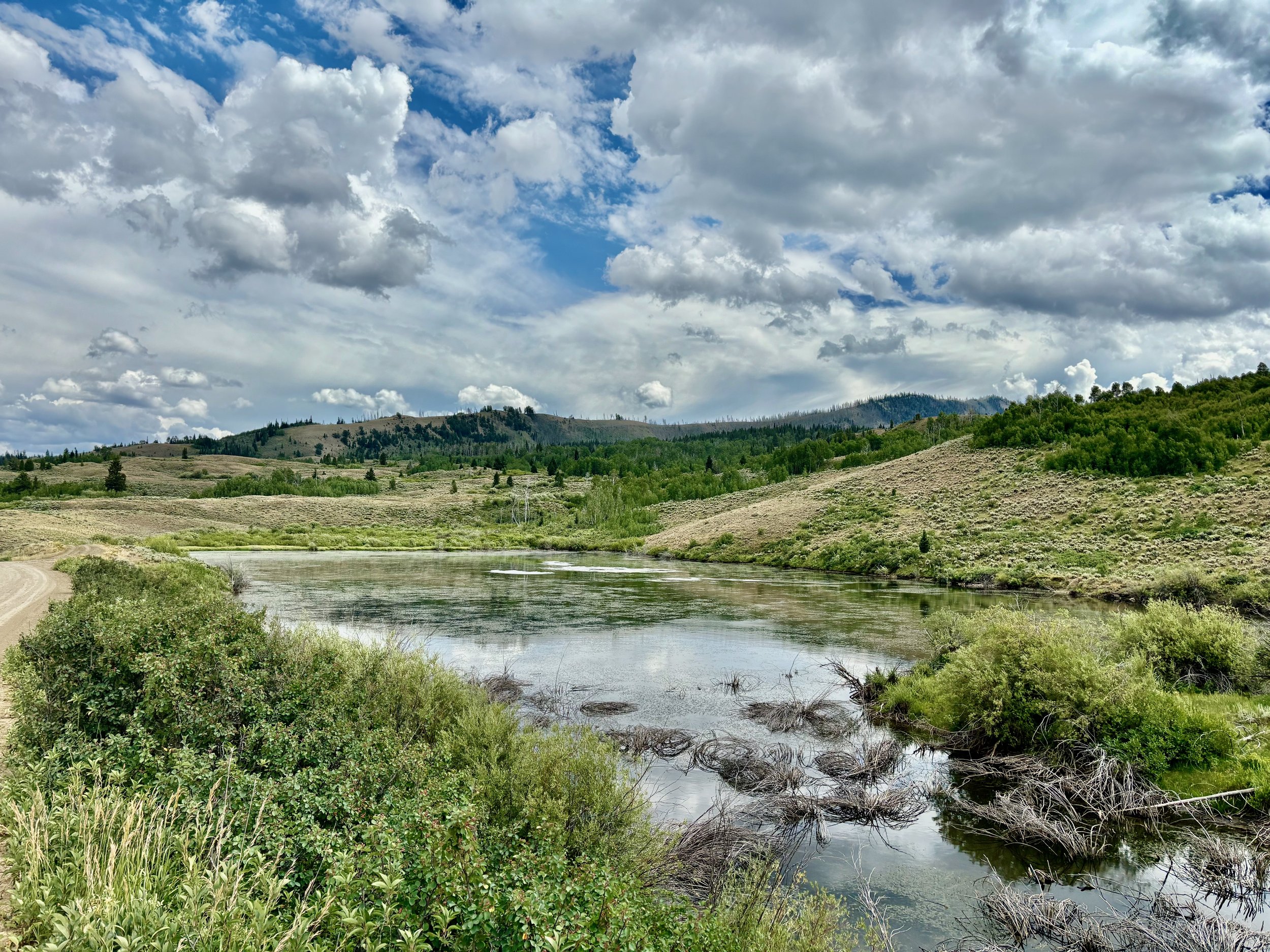
Wetland Restoration and Preservation
We work to create, restore, and enhance the wetlands that wildlife and people depend on.
Wetlands are essential to a healthy ecosystem, and provide critical habitat for many wildlife species. It is estimated that some 75 percent of Wyoming wildlife species utilize wetlands sometime during their annual life cycle. Wetlands moderate flooding, increase late-summer stream flows through water storage, regenerate underground aquifers, and purify our waters by filtering sediments and pollutants through natural processes.
Wetlands are also one of the most threatened ecosystems on earth.
Wyoming Wetlands Society partners with private landowners, State and Federal agencies, and other non-profit organizations to create and restore wetlands and wetland functions in the upper Snake River complex.
Projects
North Fork of Fish Creek/ Dew Place (2010- ongoing) Water control structures were upgraded creating wetland habitat on private land, land that was later transferred to the U.S. Forest Service. This project is a major wetland project over a series of years to restore wetland function in the Gros Ventre River system. This series of wetlands and wet meadows that were created provide filtration and aquifer replenishment, resulting in clean and cooler water springing out into the main channel of the Gros Ventre River. Late summer water temperatures were often lethal to cutthroat trout, and this wetland project helped mitigate those issues in addition to creating a stretch of cooler river haven for trout in late summer.
This project also helped create a water regime - flooding and drying - that was key to Cottonwood tree establishment and the maintenance of the Cottonwood gallery along the Gros Ventre River.
Snake River Levee Wetlands (1995)-Working with private landowners along the Snake River levee system to restore flows to incised wetlands, creating wetland habitat in the Jackson, Wyoming, area.
Valley Springs Wetlands (2004-2006)- Restoration of old gravel pits south of Jackson, Wyoming, to reestablish historic wetlands for waterfowl, wading birds, and other wildlife.
Wilson Wetland (2005)- WWS helped fund a new water control structure to restore a second gravel pit complex along the Flat Creek corridor, a major watershed that flows through the South Park area of Jackson.
Pinto Ranch Wetland (2009)- WWS helped fund a new water control structure to restore a wetland on the ranch that was used as a nesting wetland for Trumpeter Swans. This wetland is an old river oxbow along the Buffalo Fork River north of Jackson, in the Buffalo Valley area.
Grizzly Lake Wetland (2008-2010) – An old, degraded beaver dam was manually repaired, and beavers were released to maintain the wetland area. Since the restoration effort began, the wetland has become home to geese, cranes, and swans. Swans have nested on this renovated wetland since 2010.
Goose lake ( 2011)- This complex was an ephemeral wetland in the Gros Ventre drainage, and WWS installed a pond “ leveler” that maintained water levels to make it a permanent wetland. This site is used heavily by nesting and migrating waterfowl during spring migration.
Skyline Pond Complex (2012)- Renovation of a highly visible wetland along Highway 191 west of Jackson. This site is heavily used by migrating waterfowl and shorebirds, and its location along a bike path is visited by the general public. The ranch land complex that lies to the west of this area is a mosaic of small wetlands that further enhance the area.
National Elk Refuge Ponds (2016)- WWS’ matching monies contributed to the reestablishment and repair of wetlands along the Gros Ventre River and on the southern end of the Refuge, providing rest area, nesting, and migrating habitat for waterfowl and shorebirds. Much of these areas are visible to visiting publics traveling on the Refuge roads. The National Elk Refuge lays just north of the town of Jackson, Wyoming, in the northwest corner of the State.



